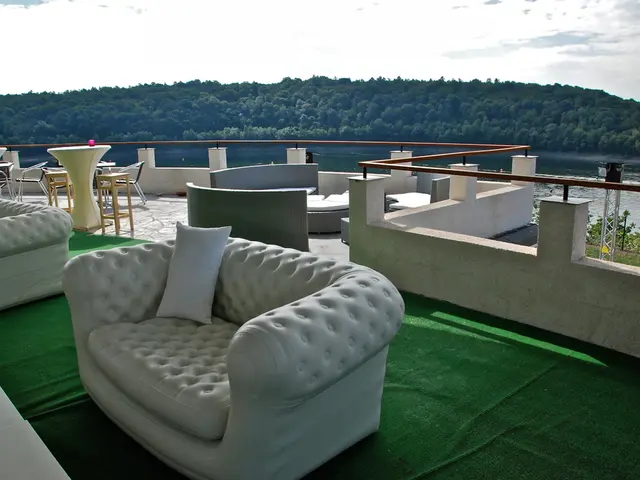Learn to cultivate stunning bulbs indoors during the winter season with the method known as 'forcing' - follow these handy steps!
Forcing Bulbs for Indoor Flowering: A Guide to Early Blooms
For those seeking to bring a touch of nature indoors during the colder months, forcing bulbs is an excellent option. This simple yet effective method coaxes bulbs into blooming indoors, offering a delightful display of flowers months before they would in natural outdoor conditions.
The process of forcing involves mimicking winter dormancy, which is necessary for most bulbs like tulips, daffodils, hyacinths, and paperwhites to flower indoors. Here's a step-by-step guide to help you get started.
Chill the Bulbs
Store bulbs in a cool environment, usually around 35°F to 40°F (2°C to 4°C), for about 6 to 10 weeks depending on the bulb species. This chilling period mimics winter conditions to allow the bulbs to mature and prepare for flowering.
Plant the Bulbs
After chilling, bulbs are planted in pots, forcing jars, or nestled in materials like gravel or soil indoors. The bulbs should be planted at a depth about two to three times their height depending on the type.
Provide Appropriate Conditions for Growth
Once planted indoors, provide moderate temperatures (often room temperature) with adequate light to encourage shoots to grow and flowers to develop.
Bloom Indoors
After forcing, bulbs will produce flowers inside, offering a beautiful spectacle.
Some bulbs like paperwhites do not require chilling and can be forced directly indoors. However, it's essential to note that forced bulbs often need to be discarded after blooming since they may not rebloom well indoors.
Choosing the Right Bulbs
There's a wide variety of bulbs suitable for forcing, each offering unique colours and fragrances. For example, Crocus 'Ruby Giant' boasts purple hues much richer than others in its group and contrasting golden anthers. On the other hand, Crocus 'Romance' offers an unusual primrose yellow colour, while Galanthus nivalis 'Viridapice' features single drooping flowers with a distinctive green blotch at the tips.
Anemone blanda 'Charmer' offers pretty, pale-pink flowers with a light centre, and the divided foliage has pinky tones on the underside of the leaf. The dwarf iris 'Katharine Hodgkin' is long-lived and features wide, opulent flowers with sea-green veining and soft, yellow-blue tones.
For a fragrant option, consider the Muscari macrocarpum 'Golden Fragrance', which turns yellow with age, or the strongly scented Muscari aucheri, one of the loveliest blues.
Tips for Successful Forcing
- Use a deep pot with drainage holes in the bottom for bulb forcing.
- When positioning bulbs for forcing, the crowns should be just below the surface, and the planter should be fairly full, but the bulbs should not touch.
- When forcing bulbs, use 3-6mm grit as a thick layer in the bottom of the pot, and then fill with a gritty loam-based compost.
- Healthy bulbs with a firm, fat appearance are suitable for forcing.
- It's advisable to initially plant bulbs in small pots, then transfer them to decorative containers as they bud.
Caring for Forced Bulbs
- In woodland-inspired bulb displays, it is essential to protect against mice and squirrels. Upturned, aquatic mesh pots and mouse traps work well. Watering is crucial, roots must not dry out once the plant is in growth. They require consistent moisture but avoid wet conditions.
- To extend the flowering period, place forced bulbs in a cool location overnight.
- The ideal temperature for forcing bulbs is between 1.5°C and 10°C. After 12 weeks, commercially sold forced hyacinths have been pre-chilled.
In summary, forcing involves mimicking winter's cold, dark conditions for ten weeks, followed by indoor warmth and light to make bulbs bloom early. With a little patience and care, you can enjoy a stunning indoor display of flowers, brightening up your home during the colder months.
- To create a lovely indoor landscape and add a touch of nature to your home-and-garden during winter, consider forcing bulbs for early blooms.
- In the gardening universe, many plants, such as tulips, daffodils, and hyacinths, require a chilling period to mature and prepare for flowering, a process similar to the winter dormancy found in nature.
- Once these plants are chilled and planted in appropriate conditions like pots or nestled in materials like gravel or soil, they will grow and produce flowers, enhancing your health-and-wellness and lifestyle at home.
- Follow best practices in the gardening world for successful forcing: use a suitable container with drainage, ensure the crowns of the bulbs are just below the surface, and employ a gritty compost mixture to stimulate growth.
- Forcing bulbs isn't confined to traditional options like tulips or daffodils; you can experiment with a wide variety of unique flowering plants, offering different colors and fragrances that can make your fitness-and-exercise routine more enjoyable and refreshing.




